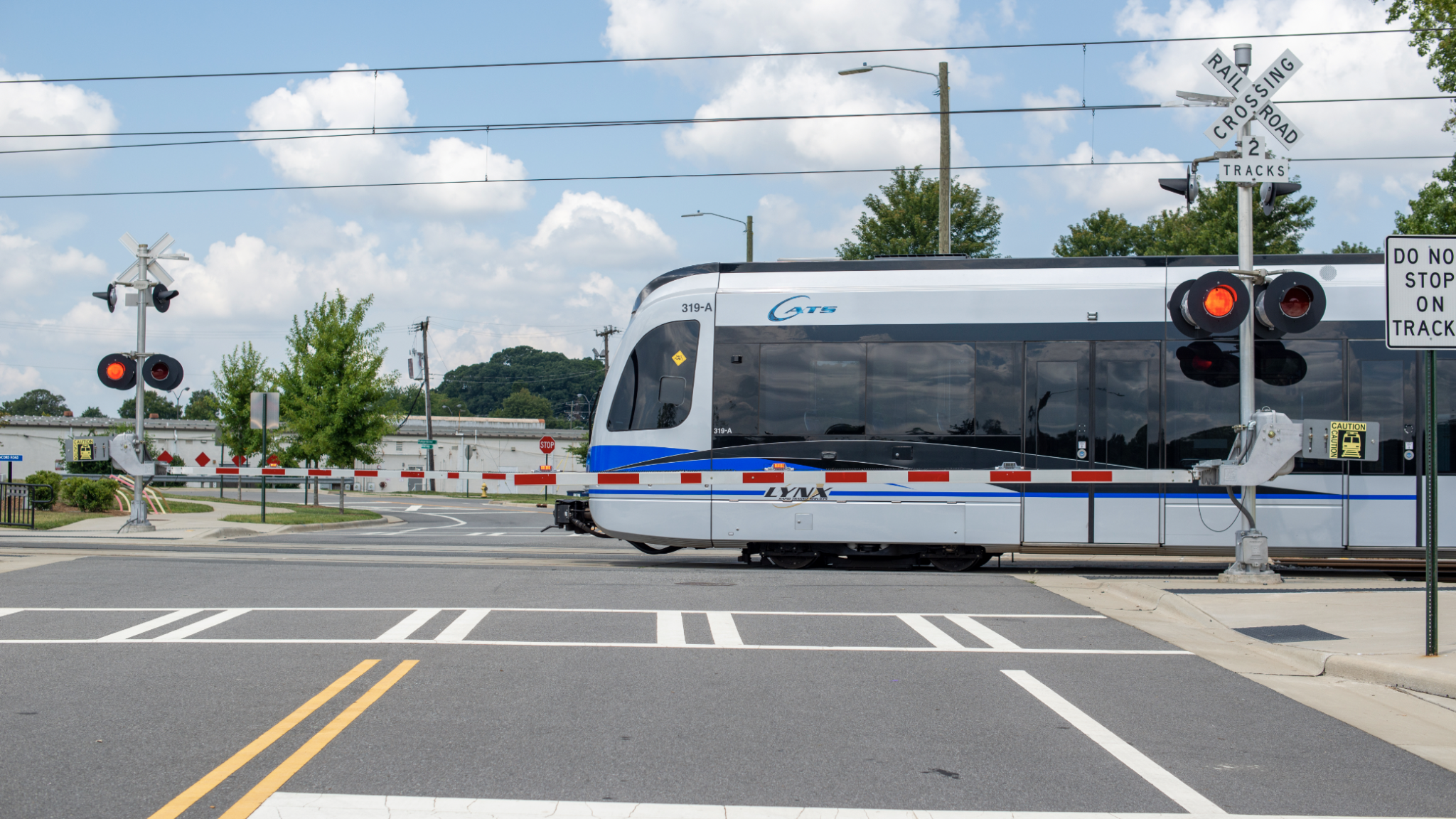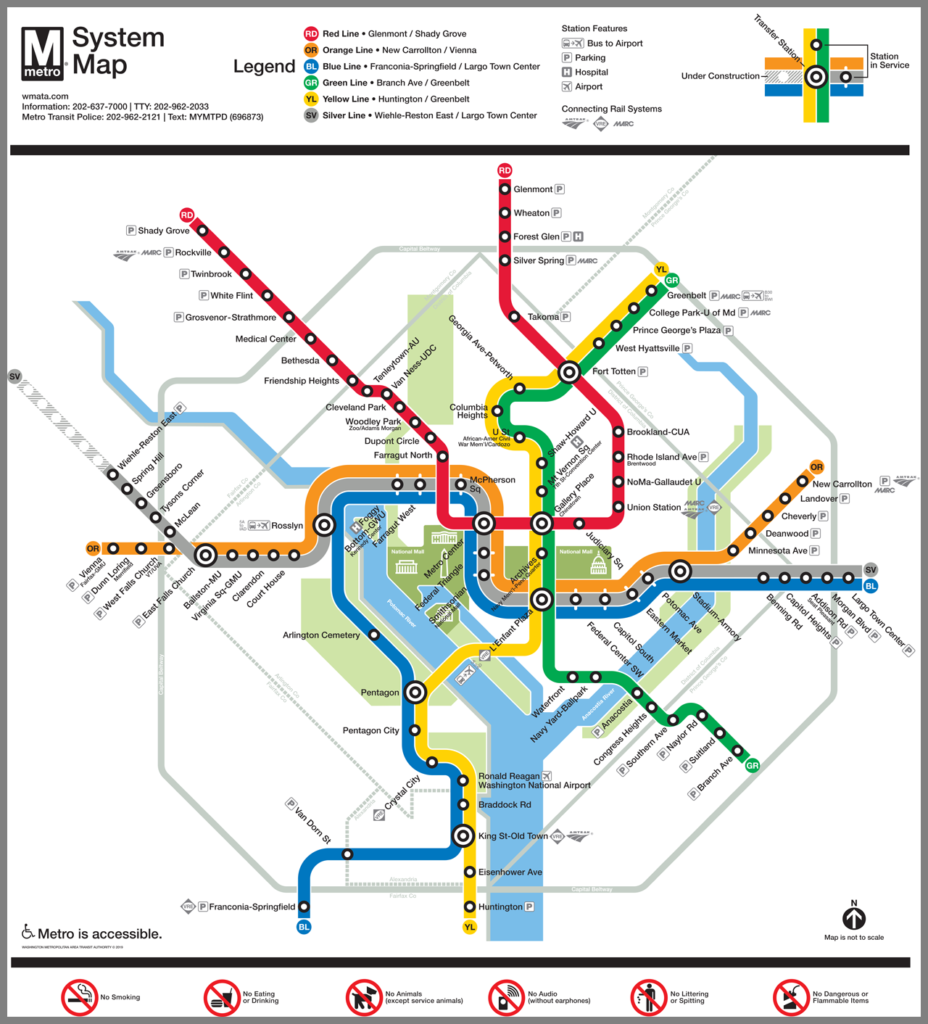
Transit Briefs: CATS, FRA Corridor ID, GCRTA, MBTA, WMATA
Written by Marybeth Luczak, Executive Editor
A March 31-April 1 inspection of the CATS Operations Control Center by the North Carolina Department of Transportation found that “required staffing levels were not met—and the transit agency was ordered to ‘cease revenue service’ if not addressed the following day,” according to the Charlotte Business Journal. (CATS Photograph)
Charlotte Area (N.C.) Transit System (CATS) addresses its lack of required Operations Control Center staff. Also, Big Sky Passenger Rail Authority, Schuylkill River Passenger Rail Authority, and an Atlanta, Nashville, Memphis and Chattanooga partnership submit proposals for intercity passenger rail service through the Federal Railroad Administration’s (FRA) Corridor Identification and Development (ID) Program; Greater Cleveland (Ohio) Regional Transit Authority (GCRTA) selects Siemens Mobility as the likely supplier of its new light rail vehicle fleet; Massachusetts Bay Transportation Authority (MBTA) publishes a three-year safety improvement plan; and Washington Metropolitan Area Transit Authority (WMATA) readies for the spring reopening of its Yellow Line.
A March 31-April 1 inspection of the CATS Operations Control Center by the North Carolina Department of Transportation (NCDOT) found that “required staffing levels were not met—and the transit agency was ordered to ‘cease revenue service’ if not addressed the following day,” according to the Charlotte Business Journal.
“Information obtained by NCDOT suggests that CATS is routinely assigning a single Rail Controller to oversee and manage the movement of all revenue service light rail vehicles and streetcars while simultaneously overseeing and managing rail vehicle yard movements in two rail yards,” NCDOT Safety Enforcement and Oversight Manager Timothy Abbott wrote in a report to CATS interim CEO Brent Cagle, according to the news outlet. “If true, this would be contrary to NCDOT’s verification of CATS’ actions to address known staffing shortages following NCDOT’s triennial audit of CATS. …”
According to the Charlotte Business Journal, NCDOT’s findings “included verification ‘that CATS may not be utilizing all active … qualified Rail Controllers and Chief Rail Controllers,’ a ‘counter-productive’ action that must be rectified.”
The NCDOT report was released April 3, hours after Cagle “notified Charlotte City Council’s transportation committee of the inspection and described steps taken to ensure two operators are always on duty,” the news outlet reported. “Cagle did not mention the state’s order to cease service. …”
In an April 3 memo, CATS Director of Marketing and Communications told the city mayor and all 11 Council members that “there is a 40% vacancy rate in the rail operations control department,” according to the Charlotte Business Journal, which noted that “Cagle told the committee it will likely take three to six months to fill all vacancies. Until then, the transit agency will have to pay overtime to have enough available controllers. …” Cagle also said that the Charlotte “rail operations manager had notified him of the understaffed operations center a week ago, and CATS had immediately moved to correct the problem.”
According to the Charlotte Business Journal, Timothy Abbott “warned that NCDOT ‘may take additional actions to delay, suspend, or temporarily cancel rail services’ if CATS fails to maintain the ‘corrective action plans’ or if the state finds ‘an imminent threat to public safety.’”
NCDOT is now requiring CATS “to submit weekly employee schedules for the operations center as well as safety risk monitoring ‘until further notice.’”
The Charlotte Business Journal also reported that during the Charlotte City Council’s transportation committee meeting, Chair Ed Driggs, “echoing previous comments by Cagle, said the transit system is believed to be fiscally healthy enough to pay for a range of vehicle maintenance and replacement costs arising from a May 2022 light-rail derailment and recent internal findings that the city’s 300-vehicle bus fleet is largely obsolete.”

The FRA in December 2022 began soliciting proposals for its Corridor ID Program, which is slated to help guide intercity passenger rail development throughout the country and create a pipeline of projects ready for implementation. Big Sky Passenger Rail Authority, Schuylkill River Passenger Rail Authority, and an Atlanta, Ga., Nashville, Tenn., Memphis, Tenn., and Chattanooga, Tenn., partnership are among the groups that submitted proposals by the March 20, 2023, deadline.
If selected, the Schuylkill River Passenger Rail Authority would receive $500,000 to plan for the restoration of service between Reading and Philadelphia, Pa., “after a four-decade absence,” according to a March 29 Reading Eagle report. Work would include developing “a service plan that examines ridership and revenue forecasts, capital programming and operational analysis,” the newspaper said. “The authority would also be able to begin negotiations with Amtrak and Norfolk Southern about using their existing track.”
The FRA, according to the paper, is expected to announce this summer which projects will be selected.
KUMV of Missoula, Mont., on April 3 reported that Big Sky Passenger Rail Authority has submitted a proposal to re-establish Amtrak’s North Coast Hiawatha route, which “would travel from Chicago to Seattle, following interstates 90 and 94, and making stops in Dickinson, Bismarck, and Glendive.” Chairman Dave Strohmaier said the authority is “hopeful their proposal is chosen thanks to letters of support from BNSF, Amtrak, and senators from both North Dakota and Montana.”
The city of Chattanooga has teamed with Atlanta, Nashville and Memphis to apply to the Corridor ID program for funding to study potential routes between the cities, according to Chattanooga-based Local 3 News. Since the last passenger train left downtown Chattanooga some 50 years ago, “the area’s train advocates have seen plan after plan and study after study fail to deliver,” according to the media outlet. The new proposal “aims to use existing tracks between the cities owned and operated by freight companies” and, if selected, funding would be used “to test the feasibility of a new passenger rail service and determine what it would entail, such as identifying where additional side tracks would be required and potential station locations.”
Cleveland.com on April 4 reported that GCRTA’s Board of Trustees has voted to advance a $164 million contract with Siemens Mobility to supply up to 24 new high-floor S200 light rail vehicles with an option for 36 more (see presentation above). They are slated to replace the existing Red Line fleet.
GCRTA issued its first Request for Proposals (RFP) in February 2021, but no responsive proposals were received and the procurement was canceled. It released a second RFP in October 2021, and one responsive proposal was received from Siemens.
The transit authority is about $7 million short of the new cars’ price tag, however, the news outlet said; it has $157 million “through internal savings and other state and federal grants” and an additional $67 million “has been committed to the project but will be released slowly over the next several years.”
The approximately 24-car contract “represents only a portion of the $393 million needed to eventually replace all of RTA’s railcars, on the Blue, Green and Waterfront lines,” according to Cleveland.com.
“GCRTA needs cash in hand now to cover at least the current contract amount to complete the Red Line replacement, [Deputy General Manager of Engineering and Project Management Michael] Schipper told Cleveland.com and The Plain Dealer, otherwise it will have to reduce its order and delay full replacement until funding comes through,” Cleveland.com reported. The transit authority is seeking a $130 million “federal grant as part of the newly passed Infrastructure Investment and Jobs Act, which is meant to help improve public transportation. Award announcements are expected sometime this month,” according to Cleveland.com, which noted that with the funding, Schipper said “RTA could have a new Red Line fleet in place in four years.”
A key benefit of the new cars: They will be able to “run on all of RTA’s existing lines,” according to Cleveland.com. “The Red Line is a heavy-rail line [HRV], while the others are light-rail. RTA currently operates different fleets on each type of line.”
The existing HRV fleet was manufactured by TokyuCar Corporation; of the 60 cars that began service in 1984, 40 remain. The existing LRV fleet was manufactured by Breda; of the 48 cars that started operating in 1981, 29 remain.
The new LRV design is slated to be “finalized over a 15-month period” once the contract is signed with Siemens, reported Cleveland.com, which said the “project will be discussed again in committee on April 10 before moving to the full board for final approval on April 18.”
The MBTA on April 3 released its 3-Year Safety Improvement Plan (above). Produced in response to an act of the Legislature and incorporating a number of safety-related initiatives related to all modes of MBTA-operated transportation, it is centered on four categories: workforce; data, system and communications; rules, policies and procedures; and quality management, according to the transit authority.
The plan “embodies a multitude of mandated requirements from the Federal Transit Administration (FTA), Federal Railroad Administration (FRA), United States Coast Guard (USCG), and the Department of Public Utilities (DPU),” MBTA reported. It includes an overview of the relevant state and federal regulatory authorities, required safety plans, a description of each transit mode, safety objectives for the next three years, and the safety performance targets for each transportation mode. It also includes an overview of the FTA’s Safety Management Inspection (SMI), related Special Directives, and MBTA’s targets for achieving compliance with those directives.
According to MBTA, this safety improvement plan is in addition to the FTA’s Safety Management Inspection report produced in 2022. That report covered a review of operations, training, vehicle maintenance, signals, train control, and track access among other items. As a result, the FTA issued eight special directives; in response, MBTA developed 38 corrective action plans and 545 action items that detailed how it intended to address each special directive. According to the transit authority, as of February 2023, it had completed 36% of the total action items with the expectation for 100% completion by the end of 2025.
The safety improvement plan is slated to be updated annually following an assessment of progress made based on measurable objectives within the plan, reported MBTA, which noted that the assessment will cover “a variety of factors including a summary of injuries and associated trends, an analysis of financial and human resources needed to continue progress, and recommendations to maintain focus on the plan’s objectives.”

WMATA on April 4 reported that it will welcome riders back to the Yellow Line on May 7, marking the completion of eight months of “safety-critical” rehabilitation work on the tunnel and bridge between the Pentagon and L’Enfant Plaza stations (see map above).
Riders will once again have a connection across the Potomac River between Virginia and Washington, D.C., according to the transit authority, and will no longer have to rely on Blue Line service, reducing travel times by as much as 15 minutes.
Construction crews have been working “around the clock” since September to mitigate water intrusion in the decades-old, steel-lined tunnel and to replace aging bridge bearings and expansion joints on the Yellow Line, WMATA said. The work included replacing more than 1,000 individual steel plates held together by more than 12,000 bolts in the tunnel and replacing 88 bearings on the bridge. The project also upgraded the fire suppression system on the 3,000-foot bridge and removed and replaced miles of communications cables used by multiple regional partners.
According to WMATA, its Fiscal Year 2024 budget includes a proposal to improve frequency on the Green and Yellow lines. “Under this proposal, 75% of Green and Yellow line customers would see more frequent service all day,” the transit authority reported. “Customers at the busiest stations in the downtown core service area could catch a train every three minutes, reducing wait times by up to 50%. Green Line frequency improvements would also benefit customers who use the southern part of the Green Line or access events and games at Navy Yard and Waterfront stations.” If approved by WMATA’s Board of Directors later this month, the improved service frequencies, and other fare and service changes would begin later this year, WMATA said.



